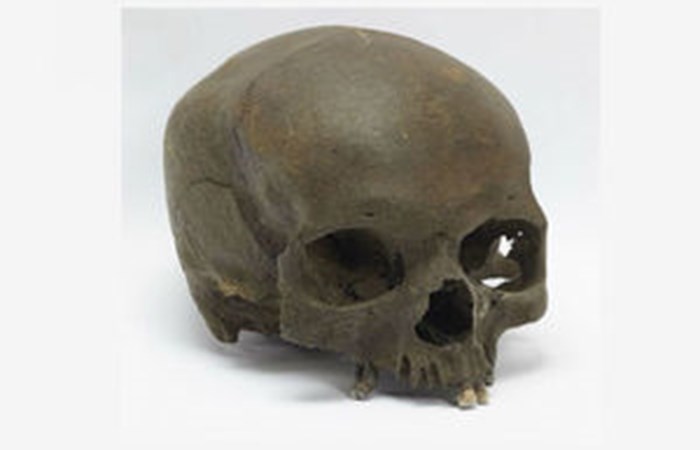govt

An important historical find has been made in Somerset when a Langport dog walker found a well-preserved human skull.
Roger Evans of Newtown found the skull along the banks of the River Sowy in March 2017. The skull was reported to the police and analysed. After several months the results revealed it belonged to a woman aged 45 or older during the late Iron Age (380-190BC) - several centuries before the first Roman invasion of Britain.
The discovery hinted there may be more clues in the area, so in December the Environment Agency reduced water levels where the remains were found so South West Heritage Trust and the agencys own archeologist could investigate.
No other human remains were found, but the archaeologists discovered that the skull lay close to a series of round, timber posts driven deep into the river bed. These may be the remnant of a causeway or raised walkway and more posts could still survive hidden in the mud. Radio carbon dating of the posts is being carried out to see if they and the skull are of the same date. Further groups of posts were seen further down the channel, suggesting other prehistoric wooden structures are present nearby.
The Environment Agency returned water levels to normal to provide a measure of protection to the timber posts and any other archaeological remains still in the channel.
Stephen Dean, Environment Agency archaeologist, said:
The chance discovery on the banks of the River Sowy has shone fresh light on Somersets hidden history. It has already added valuable information to the Somerset Historic Environment Record and reinforced our connections with the South West Heritage Trust.
The Environment Agencys future work on the River Sowy, carried out on behalf of the Somerset Rivers Authority, will be informed by past discoveries such as these and will look to capture more of the areas rich historical and archaeological story.
The discovery of the Sowy Skull is also a poignant reminder that, in looking to the future, the work we do must be informed by an understanding and respect for Somersets rich cultural and natural heritage. Only by understanding this heritage can we hope to leave it a condition fit for generations to come.
Analysis by a human bone expert showed that the female skull suffered considerably from gum disease and tooth loss. Her diet included coarse material, which had unevenly worn her remaining teeth, and resulted in severe osteoarthritis in the joint of her right jaw. She had also suffered at least one episode of chronic illness or nutritional stress during childhood. The womans head appears to have been deliberately removed at, or shortly after death.
Richard Brunning, the South West Heritage Trust archaeologist, said:
Severed heads are not an unusual discovery for the Iron Age, but the placement of the skull in a wetland beside a wooden structure is very rare, possibly reflecting a practice of making ritual offerings in watery environments.
Notes to editors:
The South West Heritage Trust is an independent charity committed to protecting and celebrating Somerset and Devons rich heritage. As well as the widely-praised Museum of Somerset and the redeveloped Somerset Rural Life Museum, in Glastonbury, the Trust manages state-of-the-art facilities in Taunton and Exeter to care for the extraordinary archive collections of the two counties. The Trust also provides essential advice about the historic environment and manages historic sites. Visit www.swheritage.org.uk/.
Archeologists first delved into the wetlands between Burtle, Westhay and close to Glastonbury in the nineteenth century. In the Neolithic and Bronze Age. Farmers made wooden trackways to cross the wetlands of the Levels and Moors area, and also occasionally deposited valuable objects and human remains in the shallow waters. By the Iron Age, some settlements were actually made in the wetland - the Glastonbury and Meare Lake Villages - which could only be reached by dug-out canoes.
Work commissioned by the Environment Agency at Steart Marshes at the mouth of the River Parrett has shown the presence of Iron Age farming communities on the Steart peninsula. Studies there, and further along the Parrett, have shown that the floodplain was constantly changing in response to sea level rise, climate change, and human activity.
A community excavation by the South West Heritage Trust on the nearby island of hard geology in the floodplain at Aller, discovered Iron Age defences and numerous circular pits for storing grain. The island may have acted as a defensive refuge from attacks and would have overloo
